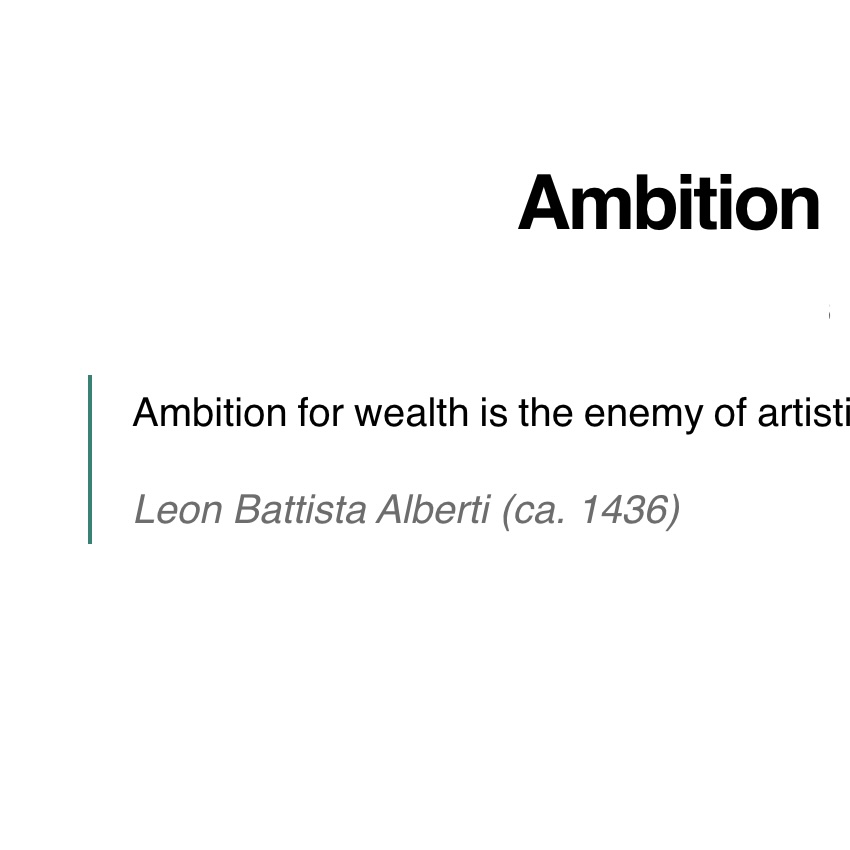Art is about the maker. Its aim: to be an expression of who we are. This makes competition absurd.
R. Rubin, The Creative Act
Tag: Art
-
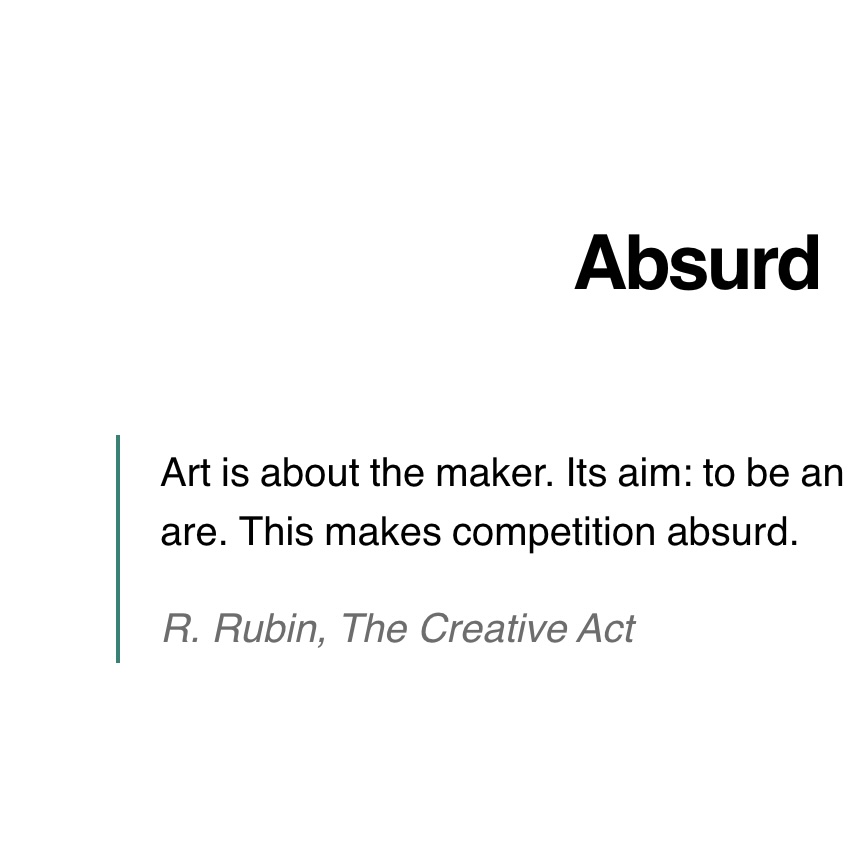
Absurd
-

Schoenberg on Art
Arnold Schoenberg reportedly said:
If it is art it is not for all, and if it is for all it is not art.
This comment seems to call into question Karl Ove Knausgård’s link between challenging art and Protestantism, not because Schoenberg doesn’t agree that art is difficult but because Schoenberg clearly didn’t link art to Protestantism. Whether Schoenberg’s description of music, Calvino’s of literature, or Knausgård’s of photography, the idea that art is restricted to the enlightened few, the properly educated, the cultured, those with the luxury of time and money to appreciate it, explains why I don’t consider myself an artist.
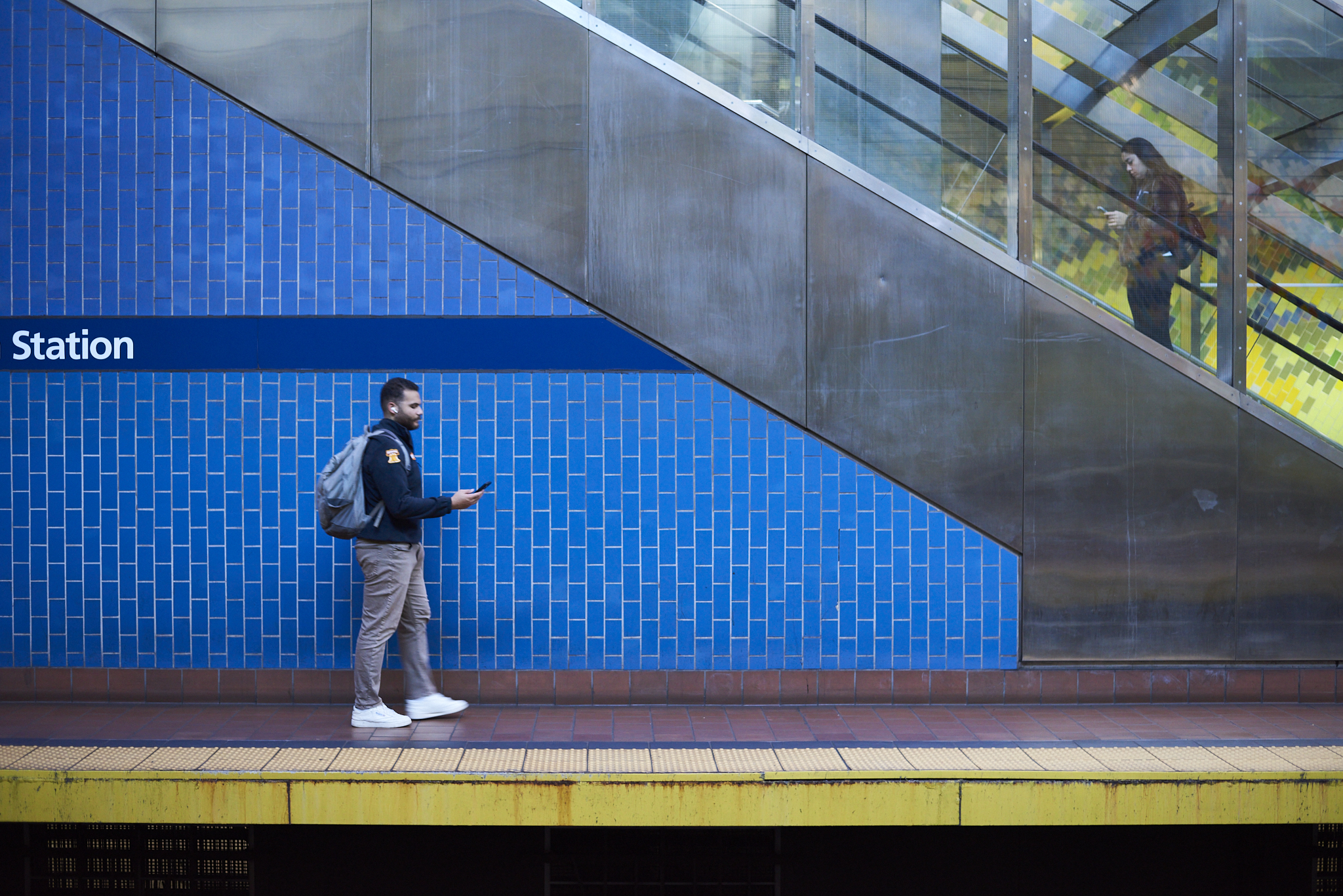
Urban #231013.6. I create meaningless things, sometimes those are photographs, sometimes magazines, sometimes books. I create things I want to see in the world. Those things might be sufficiently layered to invite different interpretation, or not. It doesn’t matter. If nobody likes them. That’s ok. If everybody likes them. That’s ok too. It’s not like I’m trying to make art.
-
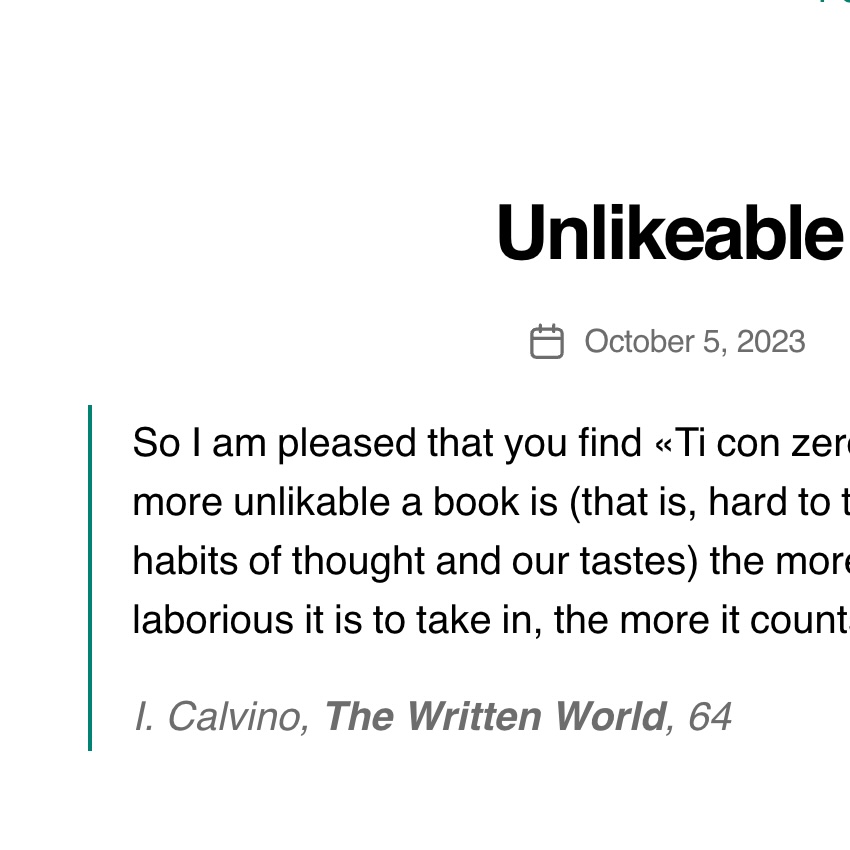
Unlikable
So I am pleased that you find «Ti con zero» “likable”; but the more unlikable a book is (that is, hard to take in, because of our habits of thought and our tastes) the more it counts; the more laborious it is to take in, the more it counts
I. Calvino, The Written World, 64 -
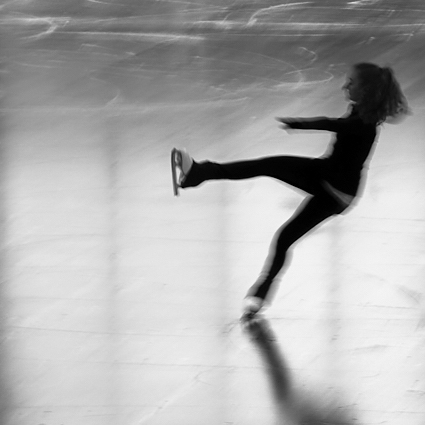
Creativity Needs No Audience
I envy Vivian Maier. Not because I like her work — I have seen too few of her photos to know what I think of them, though I doubt they would appeal much to me. No. I envy Vivian Maier because she seems not to have cared whether or not I liked her work, or had any ideas about it one way or another. She seems not to have given a single thought to any audience. That must be liberating, a particular type of freedom that encourages a more sincere form of creativity.
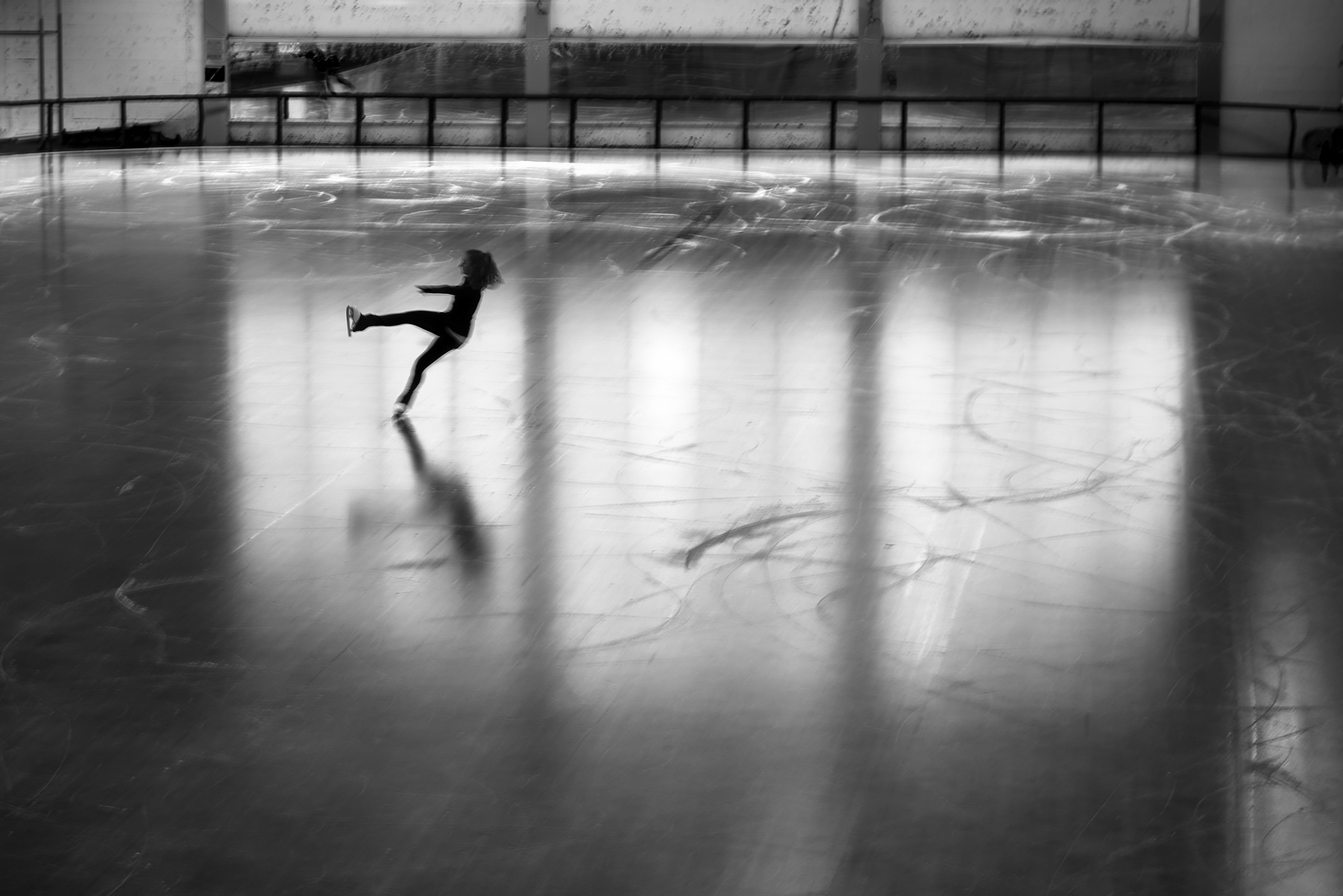
Urban #230717. In my taxonomy, Maier didn’t produce art so much as engaged in creativity. She answered to some siren call that others were not able to or privileged to hear. She made photographs that she wanted to or had to make. Maybe she produced for an audience of one, herself. I am always impressed by that person who strives to do something, to make something, to realize some inner need even when or especially when nobody is watching.
-
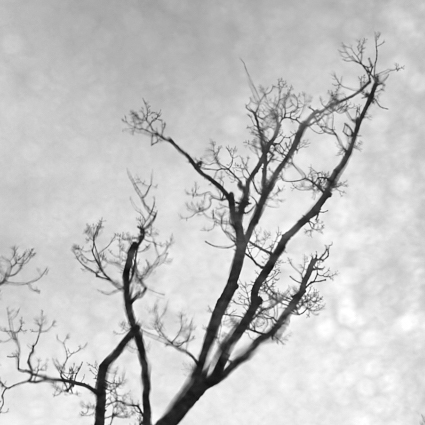
Audience of One
I went to see a show last night, an album celebration show. The music was great, but what really impressed me was the musicians. Sure, there were a number of people there to see the show, but our presence was irrelevant. Watching the band play and especially E.J., the front man, I saw a person who creates because he has to create. He would be writing and performing songs whether or not anybody listened. If he took the place of that famous tree in the woods and nobody was around to hear him, he would still be making and performing music. He creates. His creations might also be art, but that’s irrelevant to him.
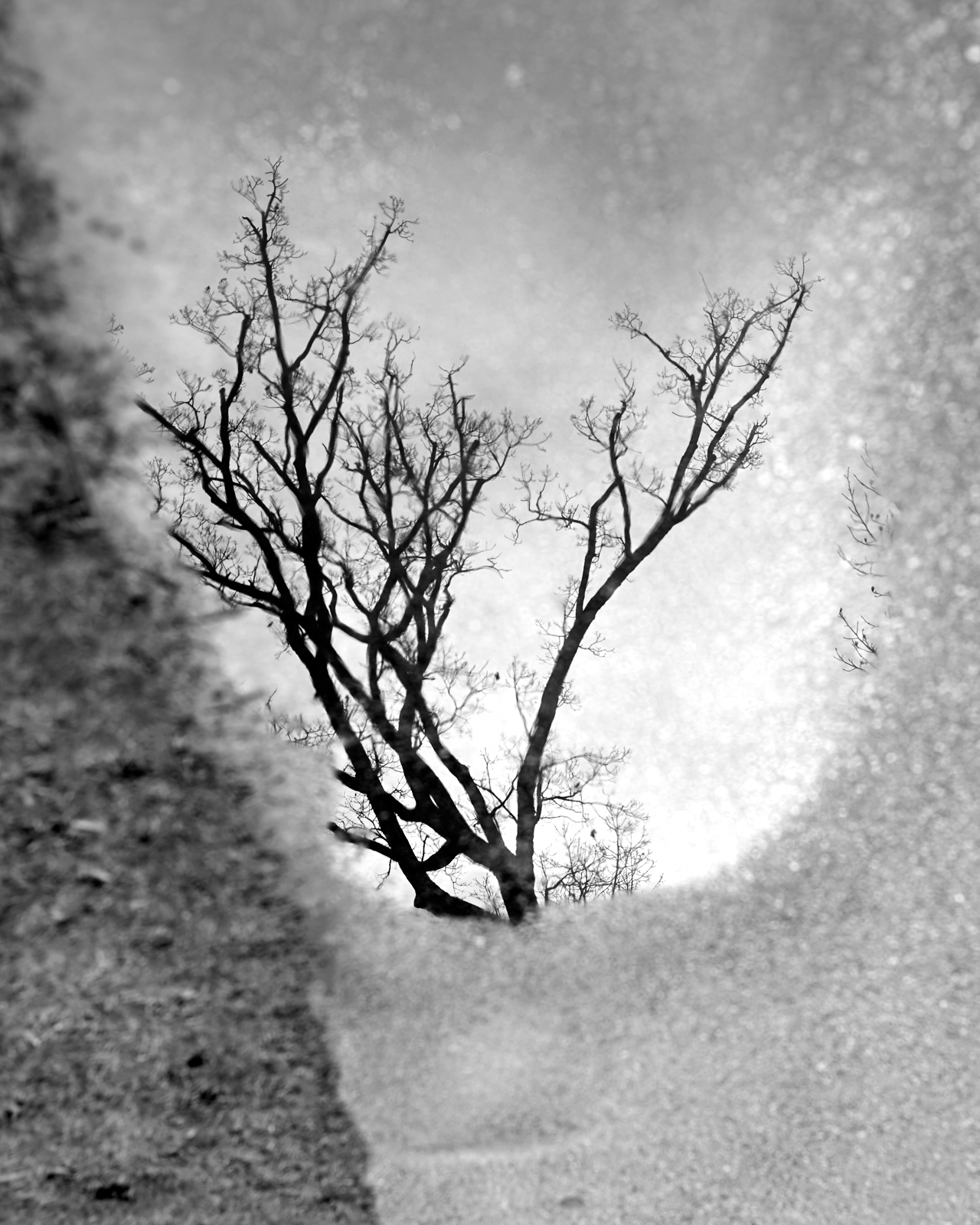
Urban #230324.0 The show reminded me that I make photographs for me. Some of them will be “original,” others will look like numerous other photographs. The last few weeks have been drippy around here. I started to notice puddles on sidewalks as an opportunity to look at trees in a different way, to take the season’s last photographs of trees before the leaf out. For the next week or so I took lots of photos of trees reflected in puddles on my commute to and from work. Pictures of reflections are a dime a dozen, even with inflation. I will not take an original picture of a reflection. But that assumes I take pictures with an audience in mind, one that has surely seen dozens of pictures of reflections. By that metric, pictures are little more than the subject captured in the frame. But this misses the point, at least for me.
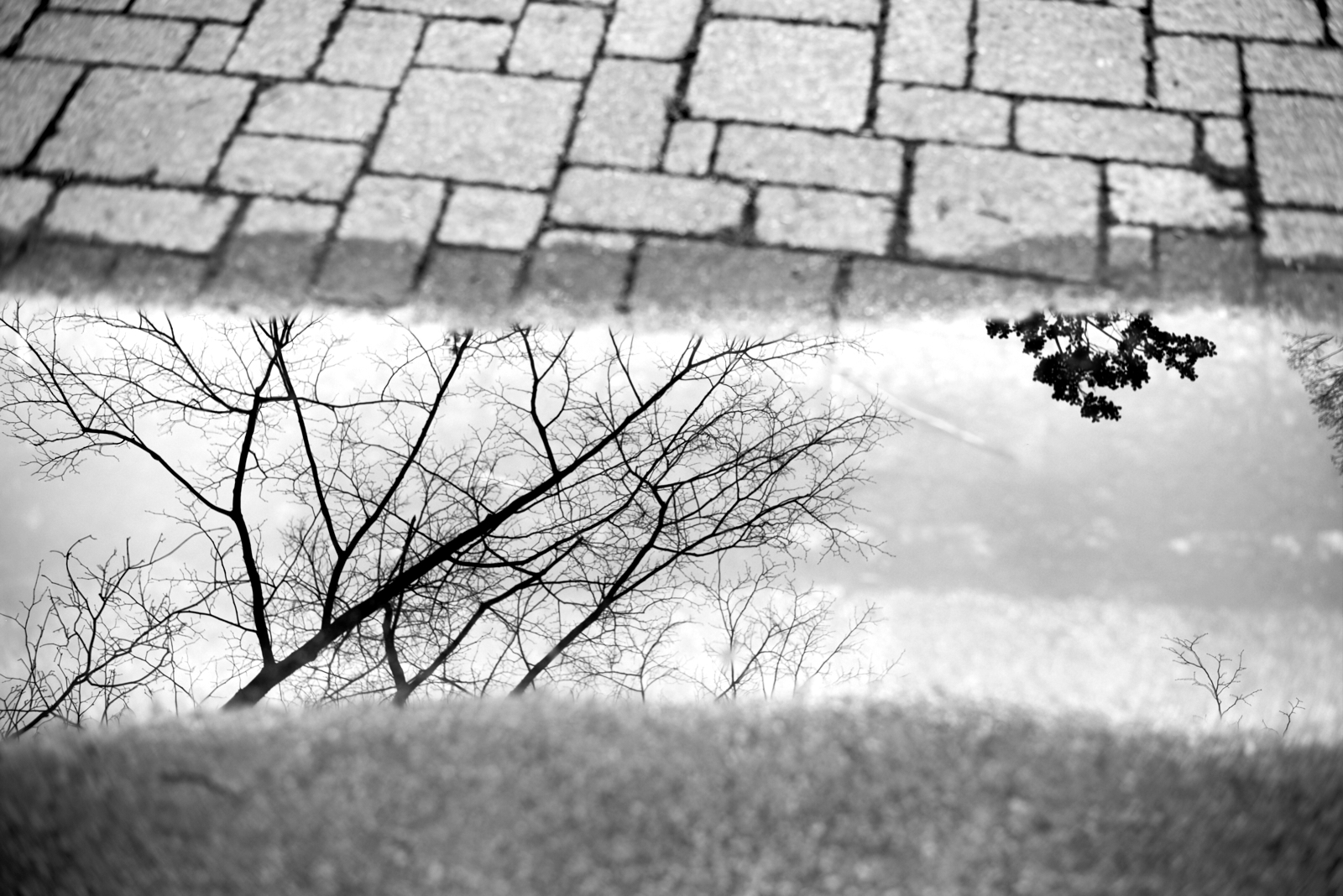
Urban #320324.1 I don’t care if at first glance my photos look like pictures everybody has taken. Those photographers are not me and did not take my photos. If, as Wim Wenders has asserted, the camera points both directions, forward at the subject and back at the photographer, then photographs I take of reflections are not like anybody else’s. They answer to my questions and concerns and aesthetic sensibilities. For that reason, when I take a picture or print a photograph, I think only of one audience, an audience of one: me.
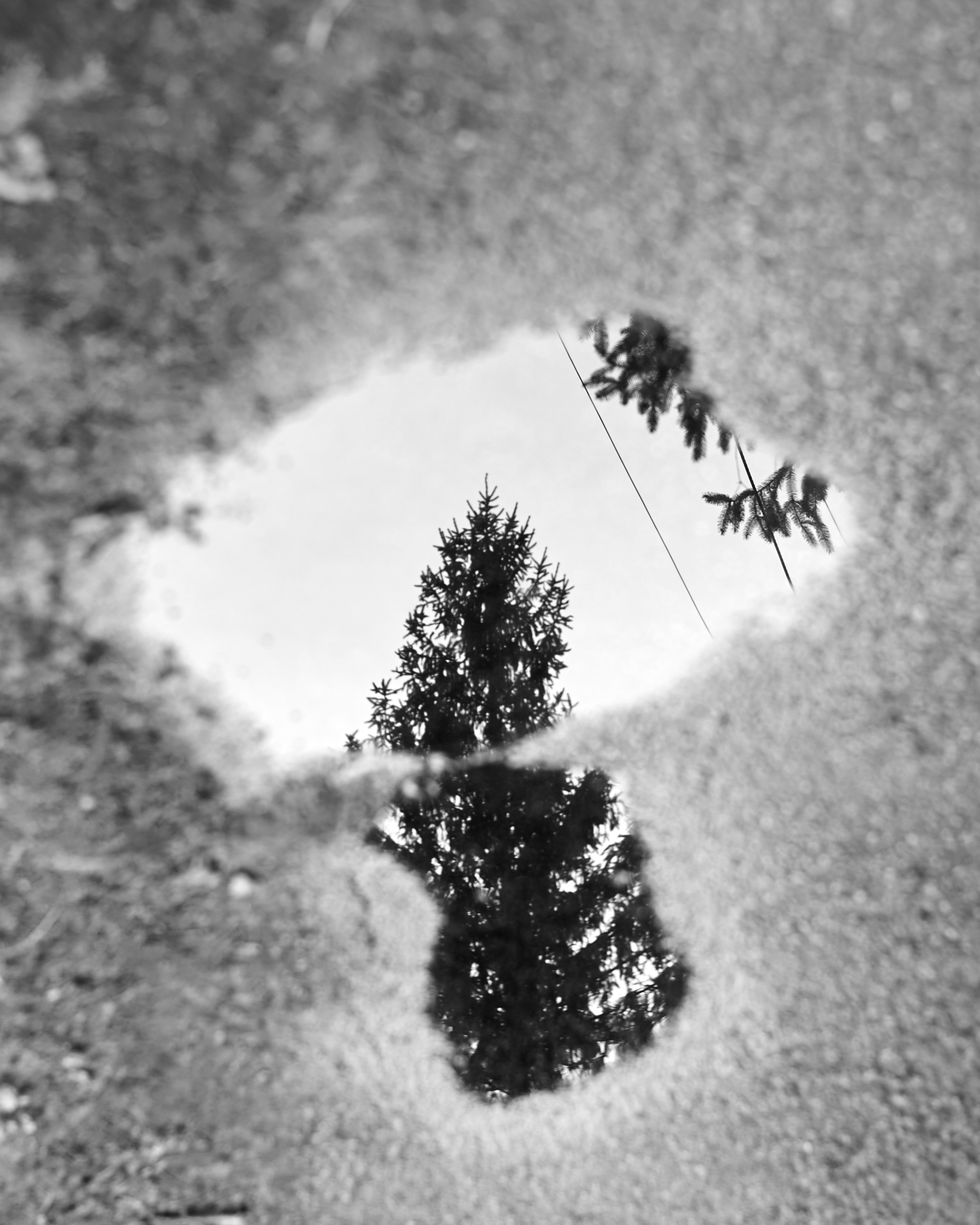
Urban #230324.2 I make the photographs I need to see in the world, not the photographs I think the world needs to see. Maybe that’s the difference between creating and making art. While the latter fulfills its purpose when an audience interacts with it, the former fulfills its purpose by existing. I am not an artist but rather a person who creates.
-
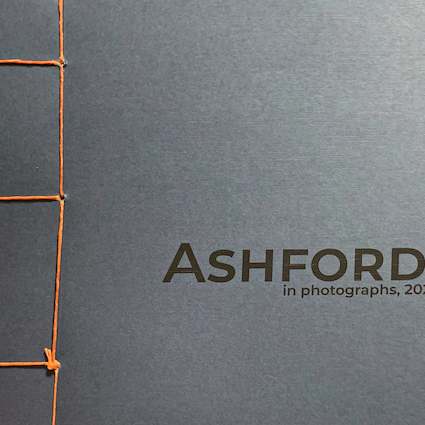
Ashford Farm Photo Book
I make “limited edition” books, something between art books and photo books. They are often experiments that will never move beyond my work table, hence the “limited edition” label. I play with format, with layout, with folding pages or cut pages. Some are little more than pamphlets. I always learn something from these books.
This “Ashford Farm in Photographs, 2021-2022” is another type of book. This type I tend to make for somebody I know or someplace I frequent. In this case, I assembled photographs I had taken while at Ashford Farm, a local horse farm. Over the past couple years I had spent a number of days there watching the riders and looking around the farm. I had taken pictures of horses in their stalls, people riding horses, kids in the summer riding camps, and other parts of the farm that seemed interesting to me. These episodic books are “limited editions” insofar as I suspect only a very small number of people will be interested in them.
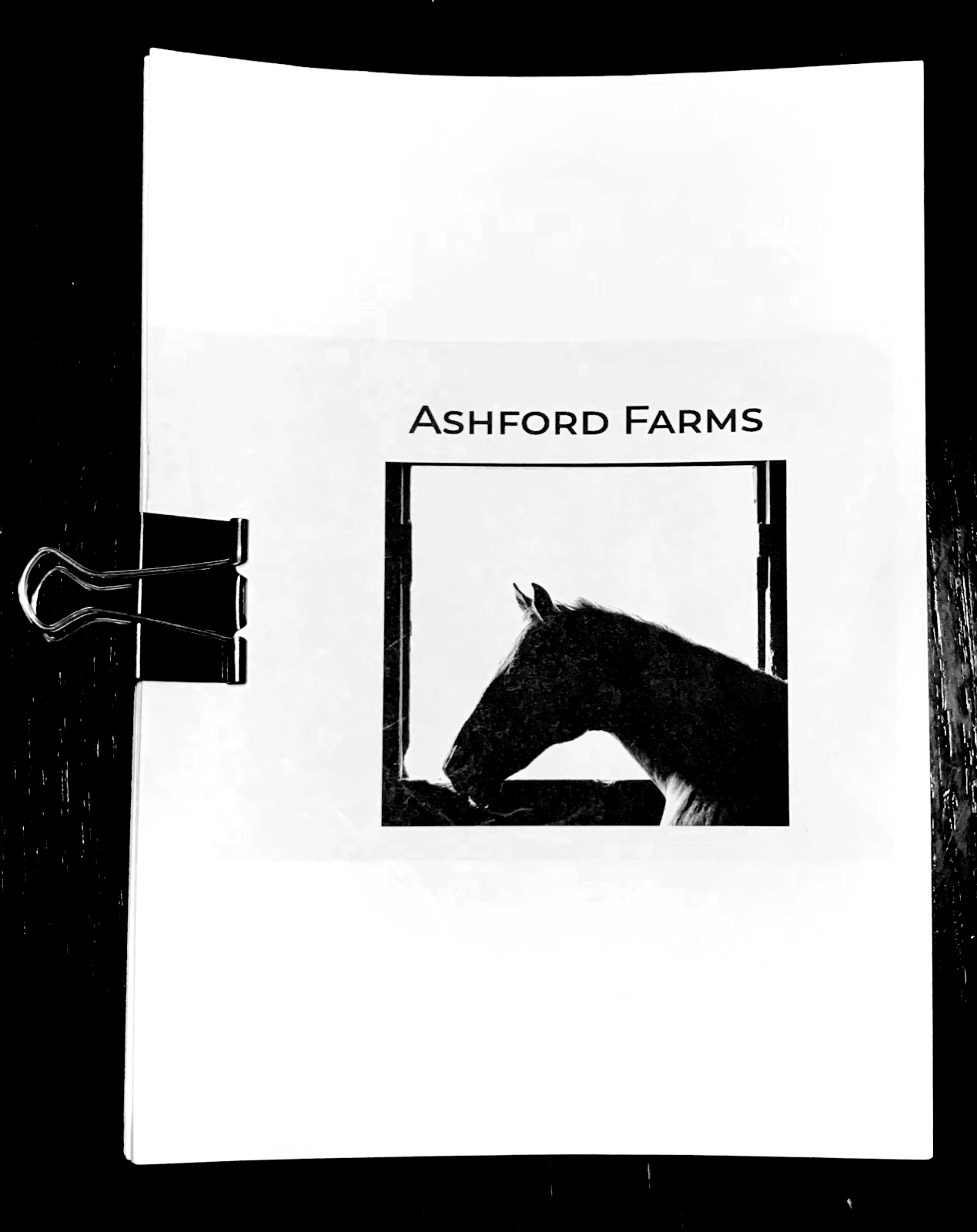
Ashford Farm in Photographs, 2021-2022 first draft title page 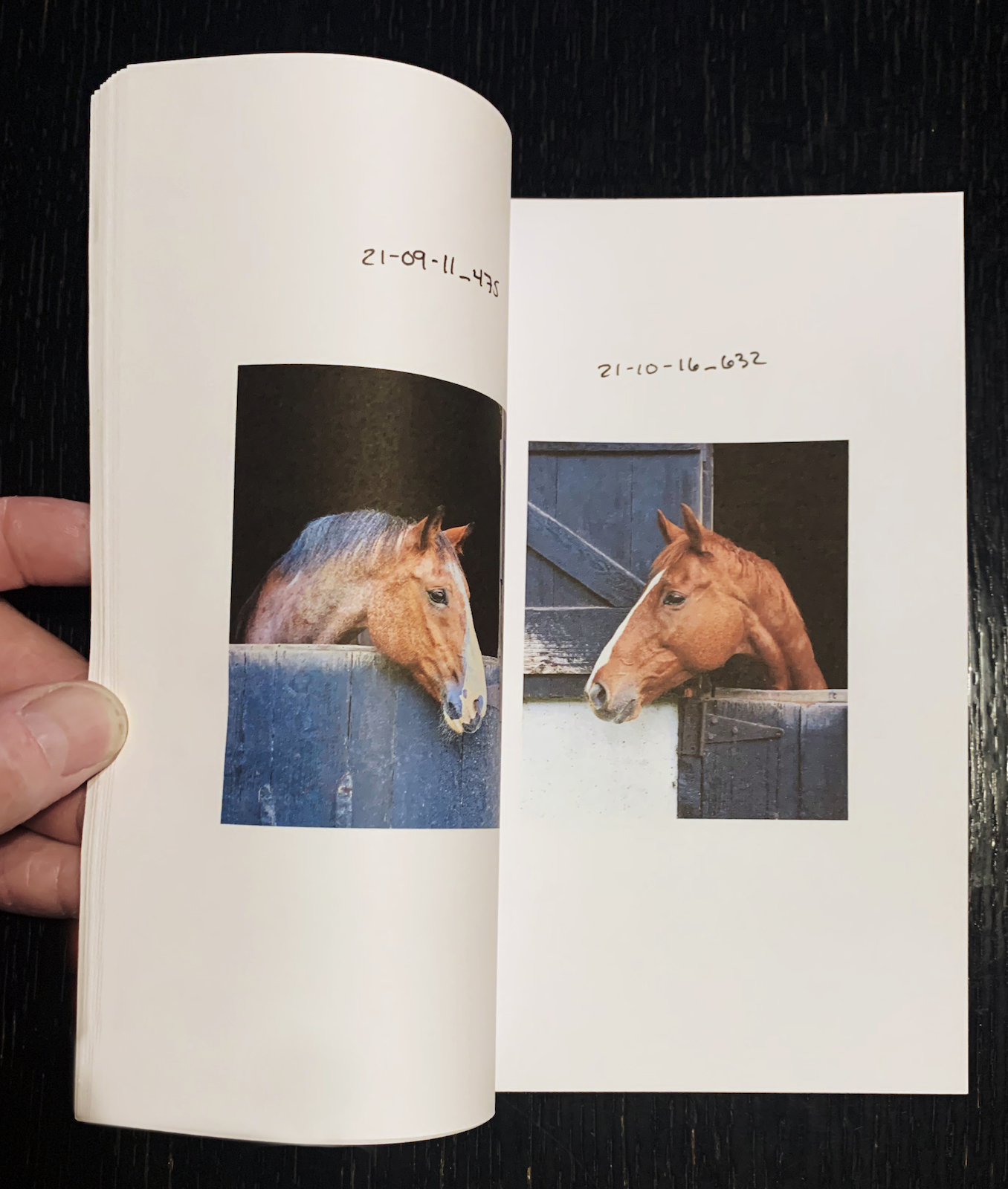
Draft pages with notes, from an early draft of “Ashford Farm in Photographs, 2021-2022.” Like all such books, “Ashford Farm in Photographs, 2021-2022” went through a number of revisions in my head before I got around to printing a draft. For me, printing and assembling a draft is essential, even if the draft is small and printed on cheap copy paper. I have to see the sequence, thumb through the pages, test the folding pages and see how partial pages work.
When I’ve worked out the initial problems and arranged the pages the way I want, I tend to print a full-size draft.
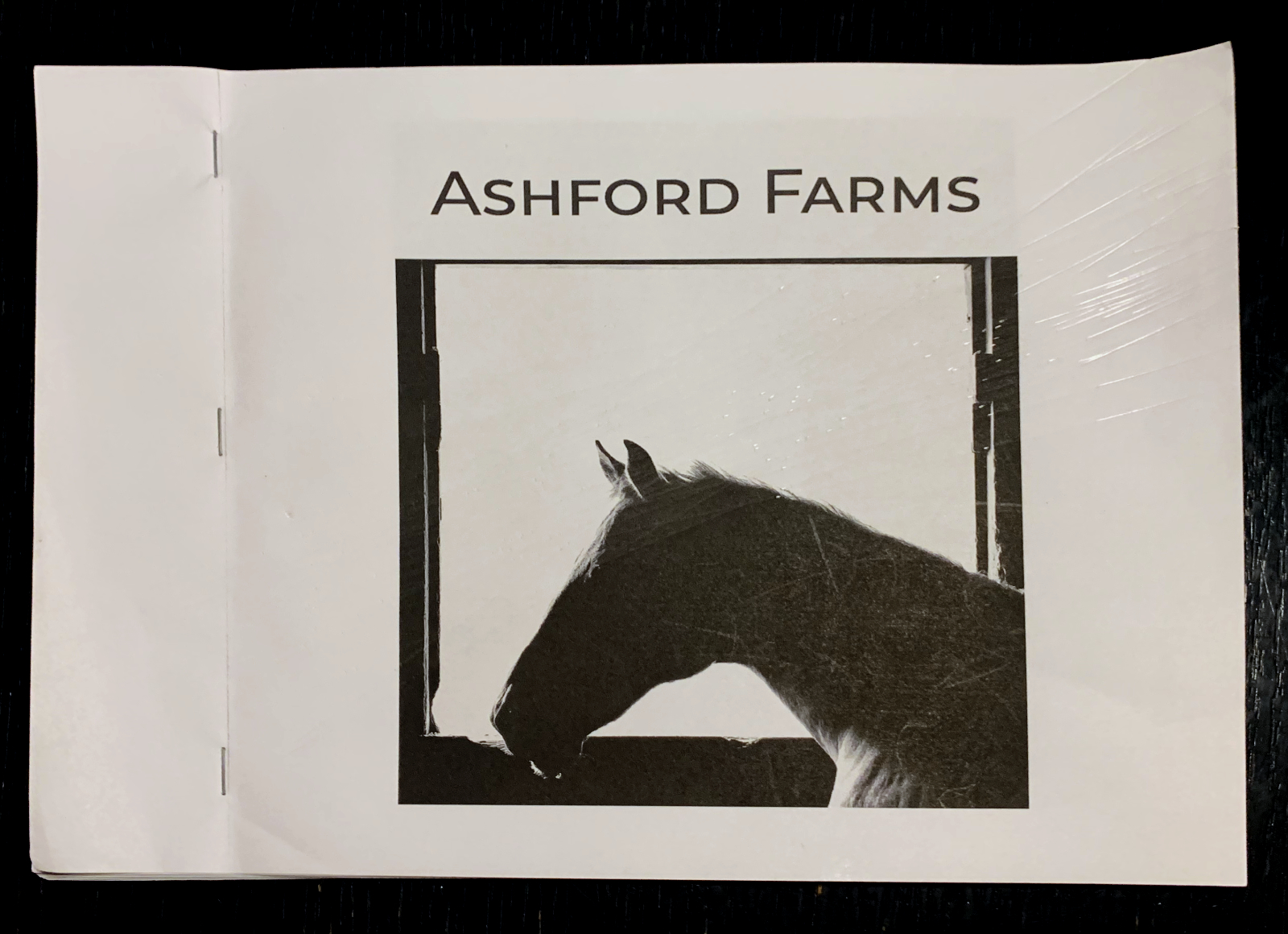
Ashford Farm in Photographs, 2021-2022 another draft title page 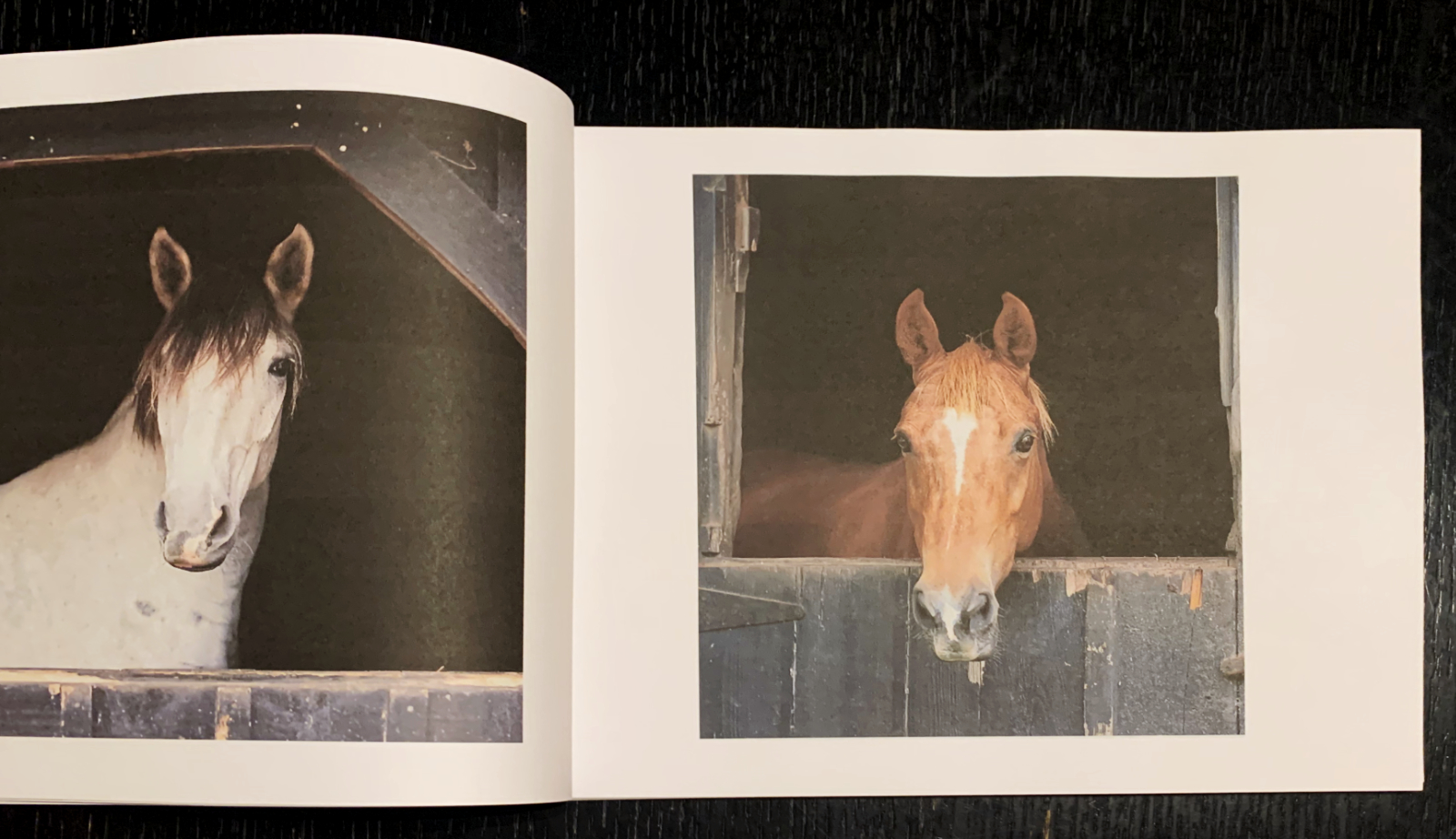
One of the pages in the draft of “Ashford Farm in Photographs, 2021-2022” 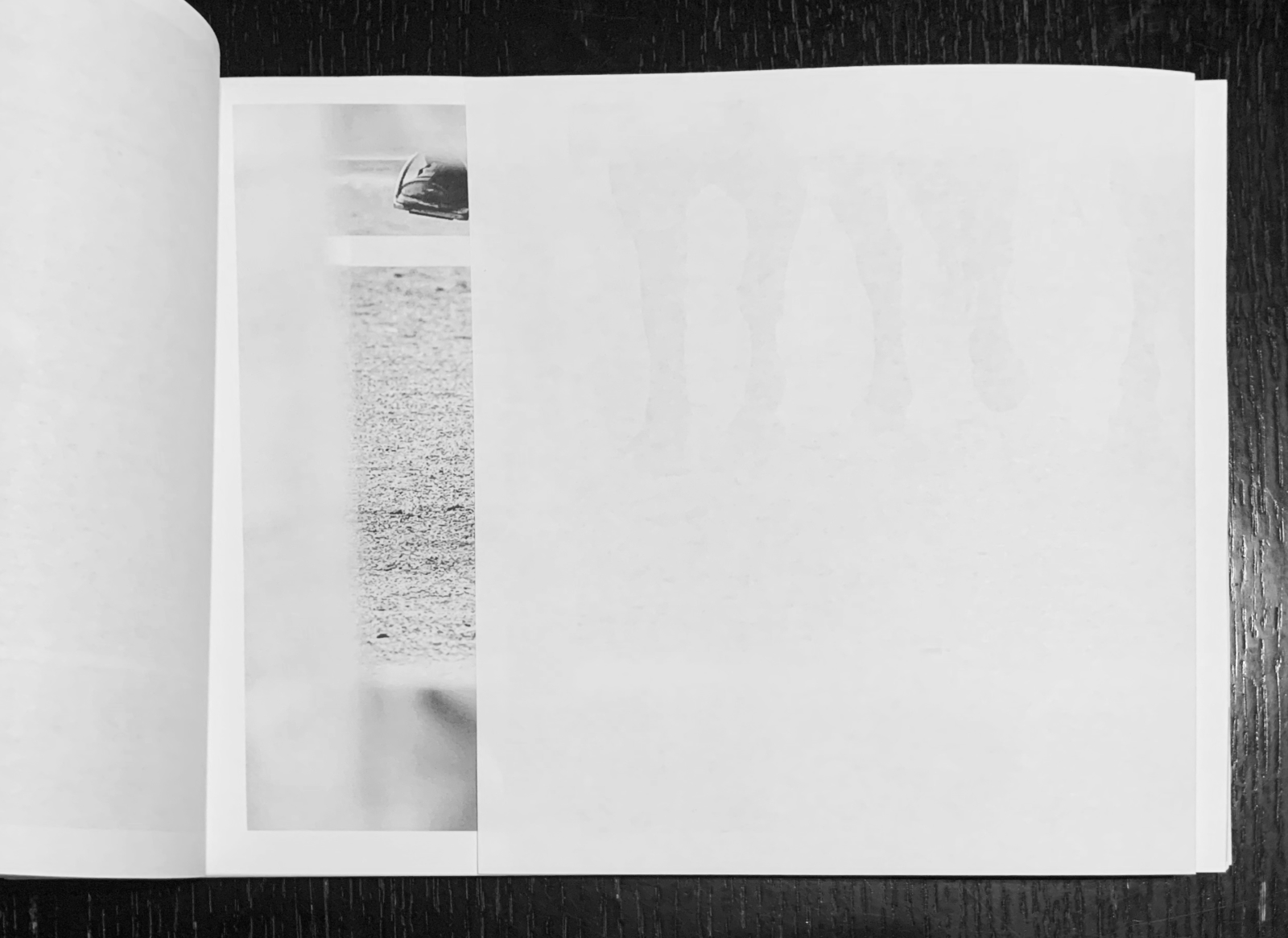
Fold-out page before folding out, in a draft of Ashford Farm in Photographs, 2021-2022. 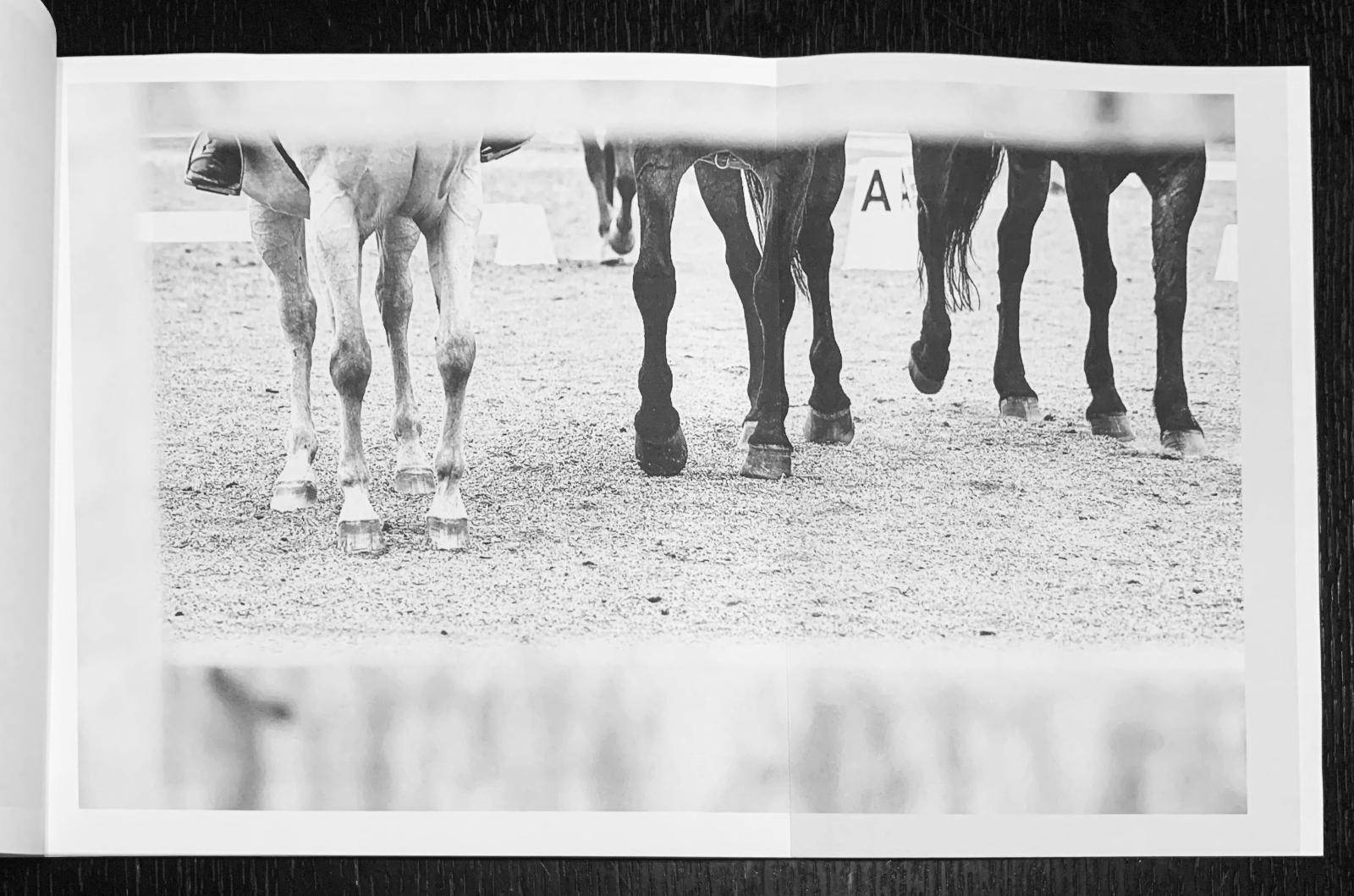
Fold-out page after folding out, in a draft of Ashford Farm in Photographs, 2021-2022. I spend a day or so looking at this draft just to see how it feels, especially things like format and dimensions, and to catch the last problems or issues that have thus far escaped my notice. I also think about things like binding, covers, and paper. When I’m happy with the draft (or no longer unhappy with it), I print the final version and assemble the book.
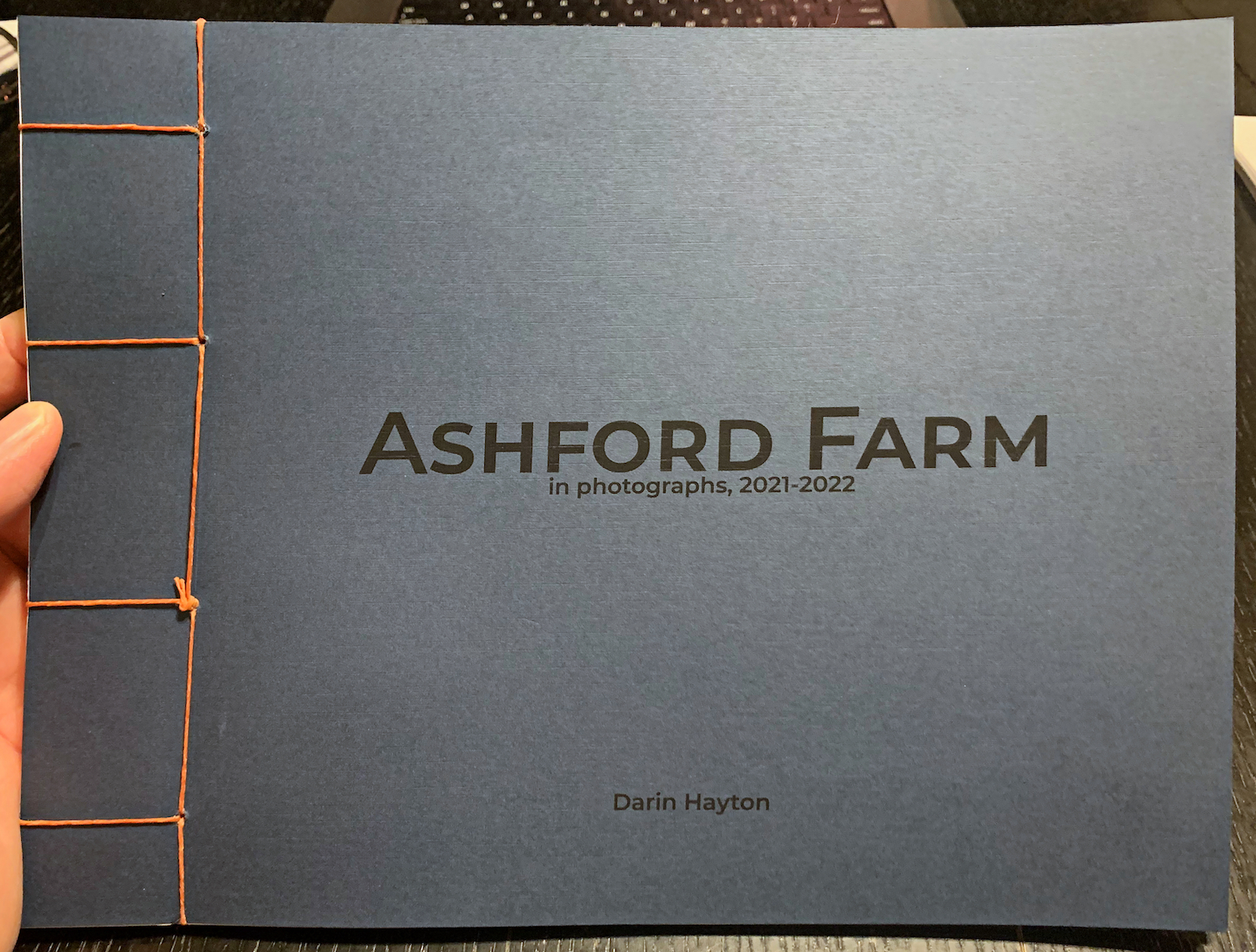
The final cover of “Ashford Farm in Photographs, 2021-2022.” 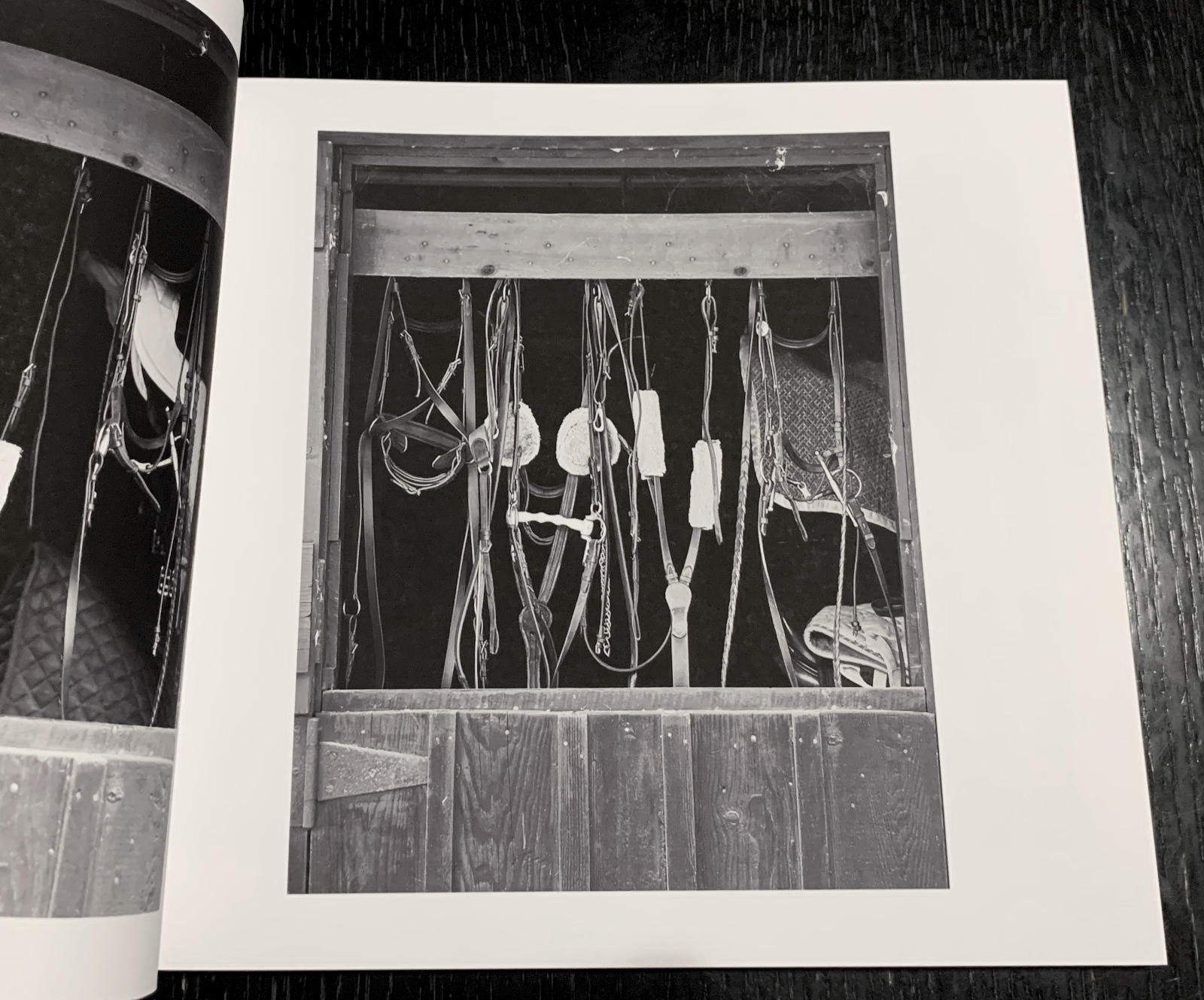
Tack hanging in door from the final version of “Ashford Farm in Photographs, 2021-2022.” 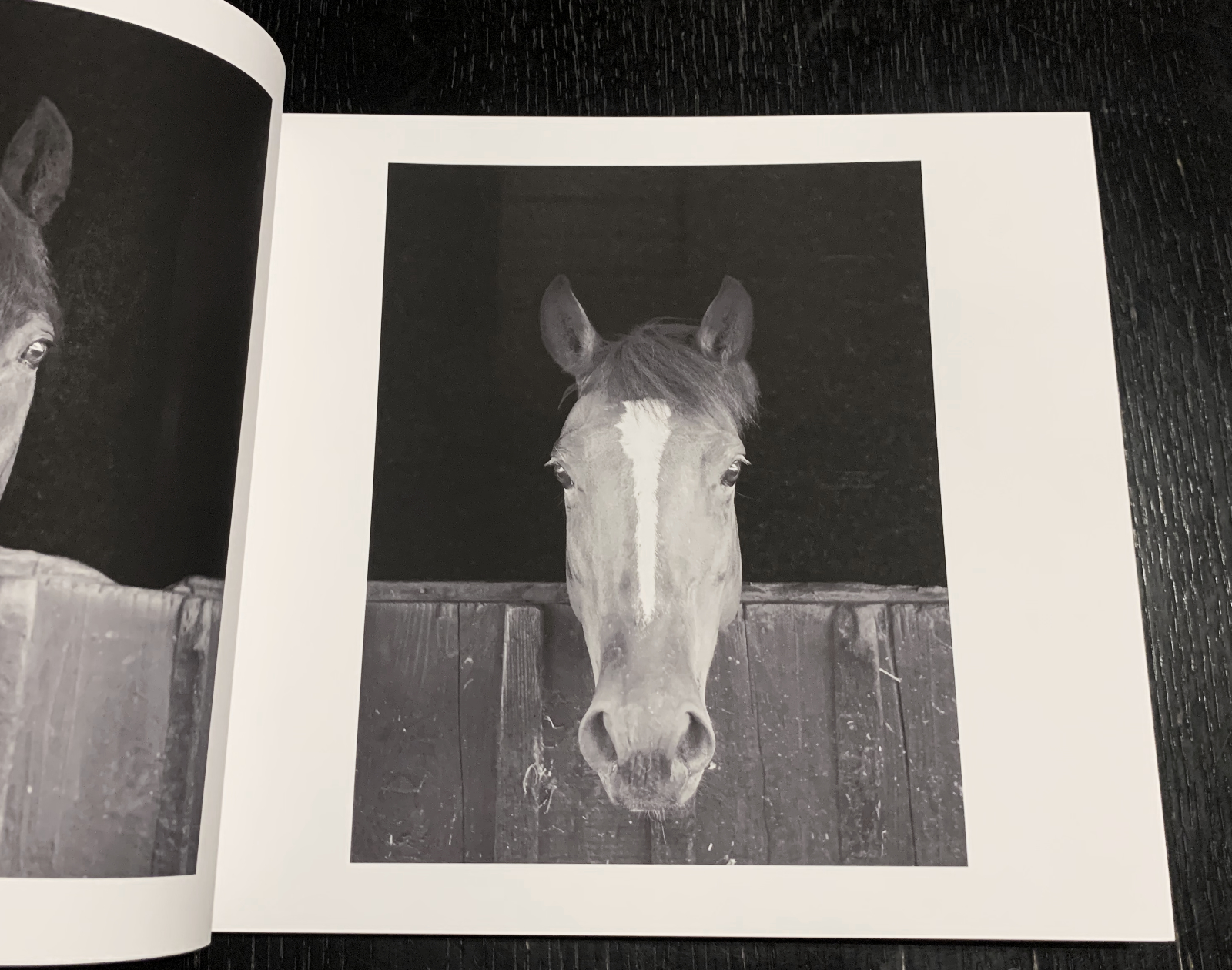
A horse looks out of its stable, from the final version of “Ashford Farm in Photographs, 2021-2022.” 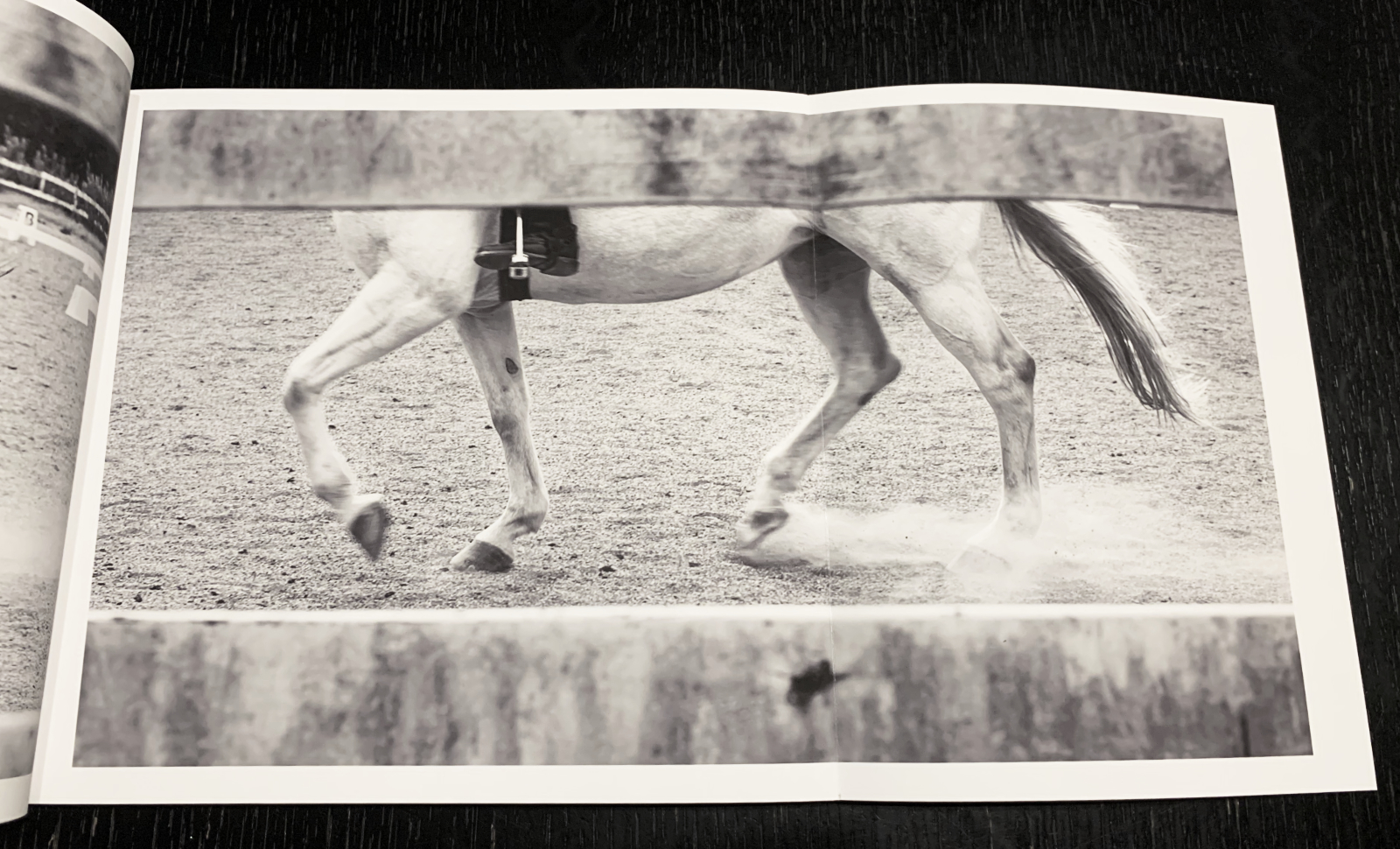
A horse walking in a ring, as seen through the fence, from the final version of “Ashford Farm in Photographs, 2021-2022.” For “Ashford Farm in Photographs, 2021-2022” I assembled 51 photos I had taken last year and this year. Landscape orientation with a number of fold-out pages seemed ideal. The pages would be large enough to accommodate both landscape and portrait photos, and the fold-outs would let me include some 16×9 proportion shots. I used a binding (often referred to as “Japanese Stab Binding” though also similar to the binding used on “Chinese-style notebooks”) and cover that echoed utilitarian notebooks. I used a smooth, bright matte paper for a couple copies and bamboo-washi paper for another. Each copy is unique — not only did I print them on different paper (my favorite was the Awagami bamboo paper, mainly because of the feel), but I also used different thread for the stitching and in one case different stock for the cover.
Here are a few more photos from this book.
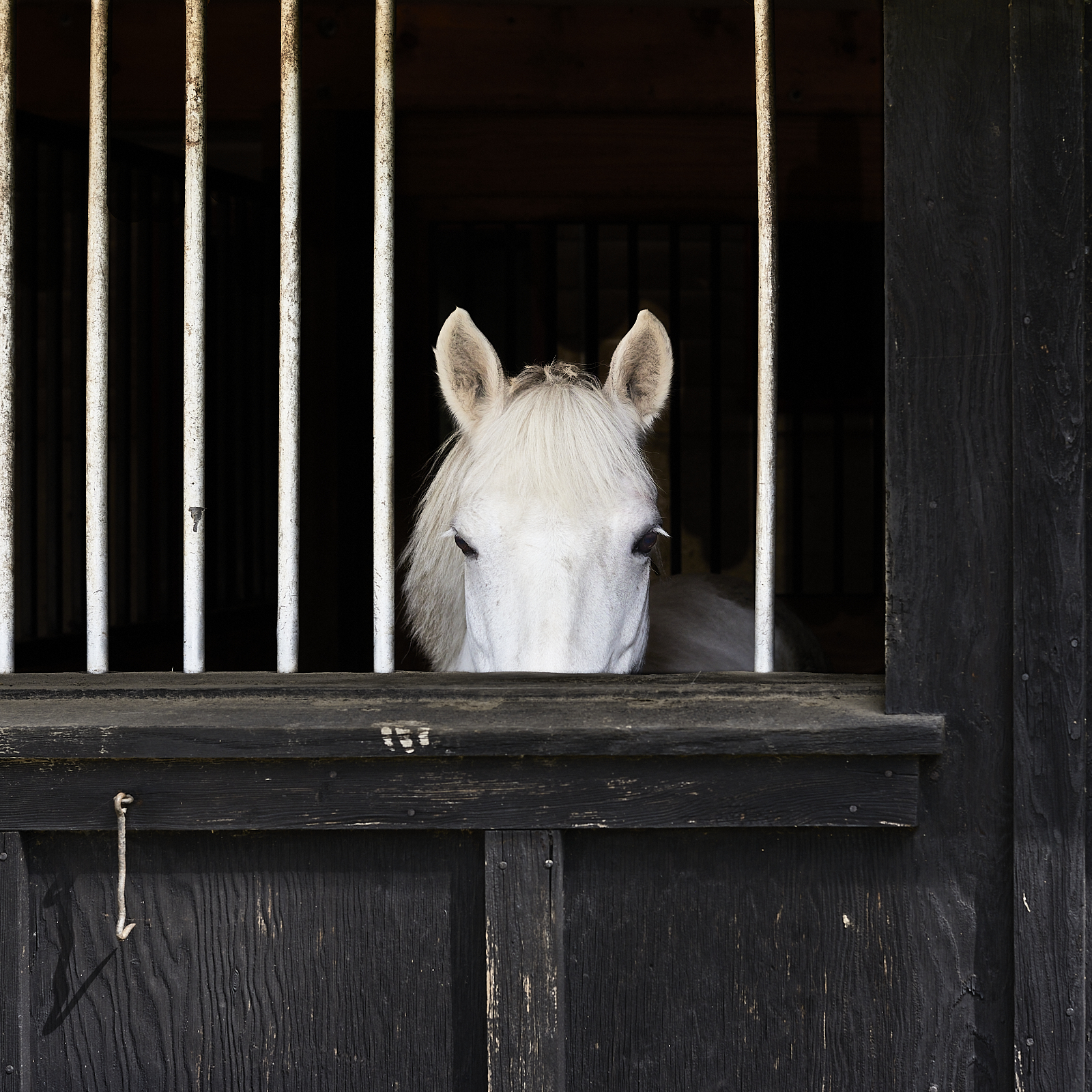
A horse looks out from its stable, from the final version of “Ashford Farm in Photographs, 2021-2022.” 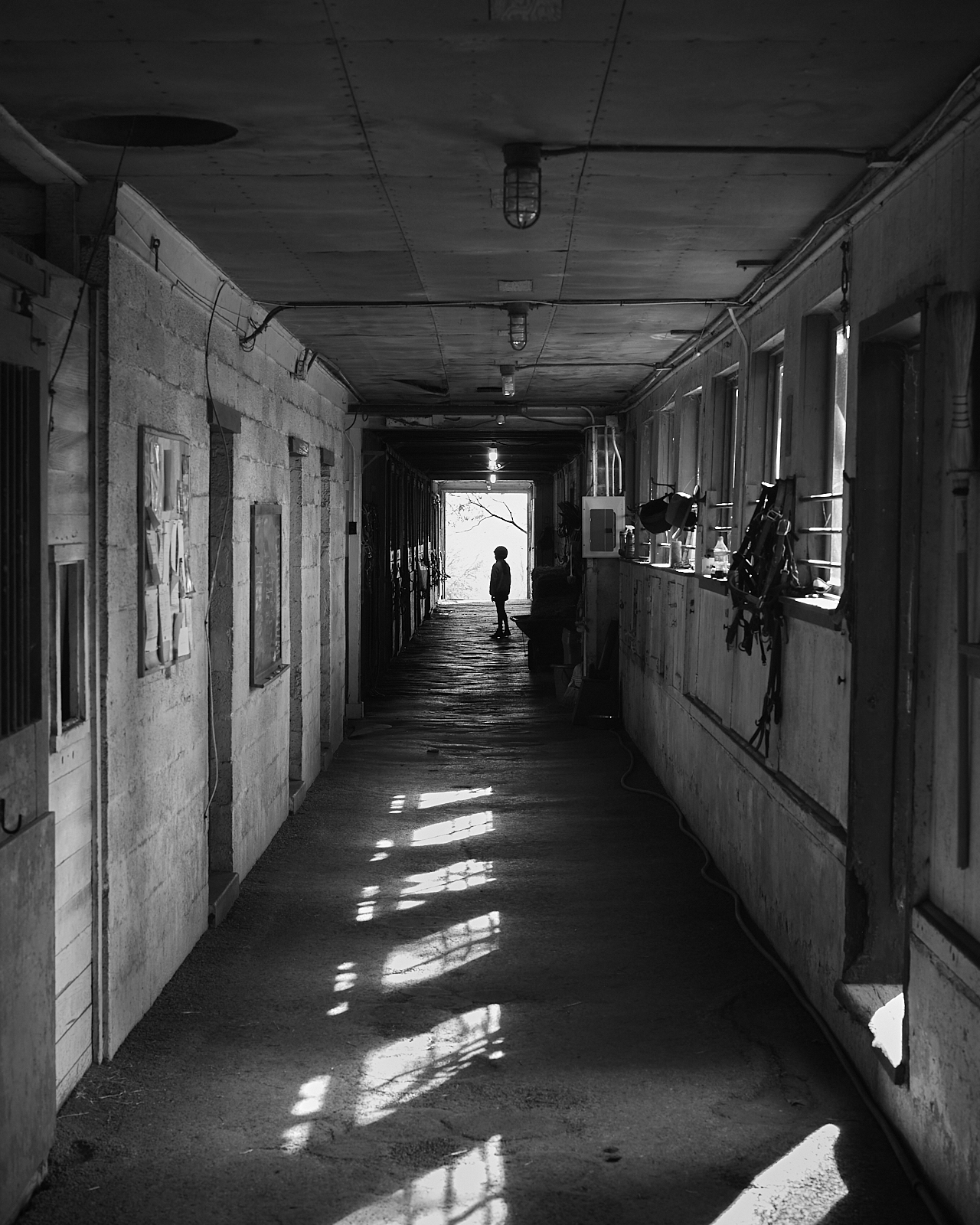
A young girl pausing to look at a horse in the barn, from the final version of “Ashford Farm in Photographs, 2021-2022.” 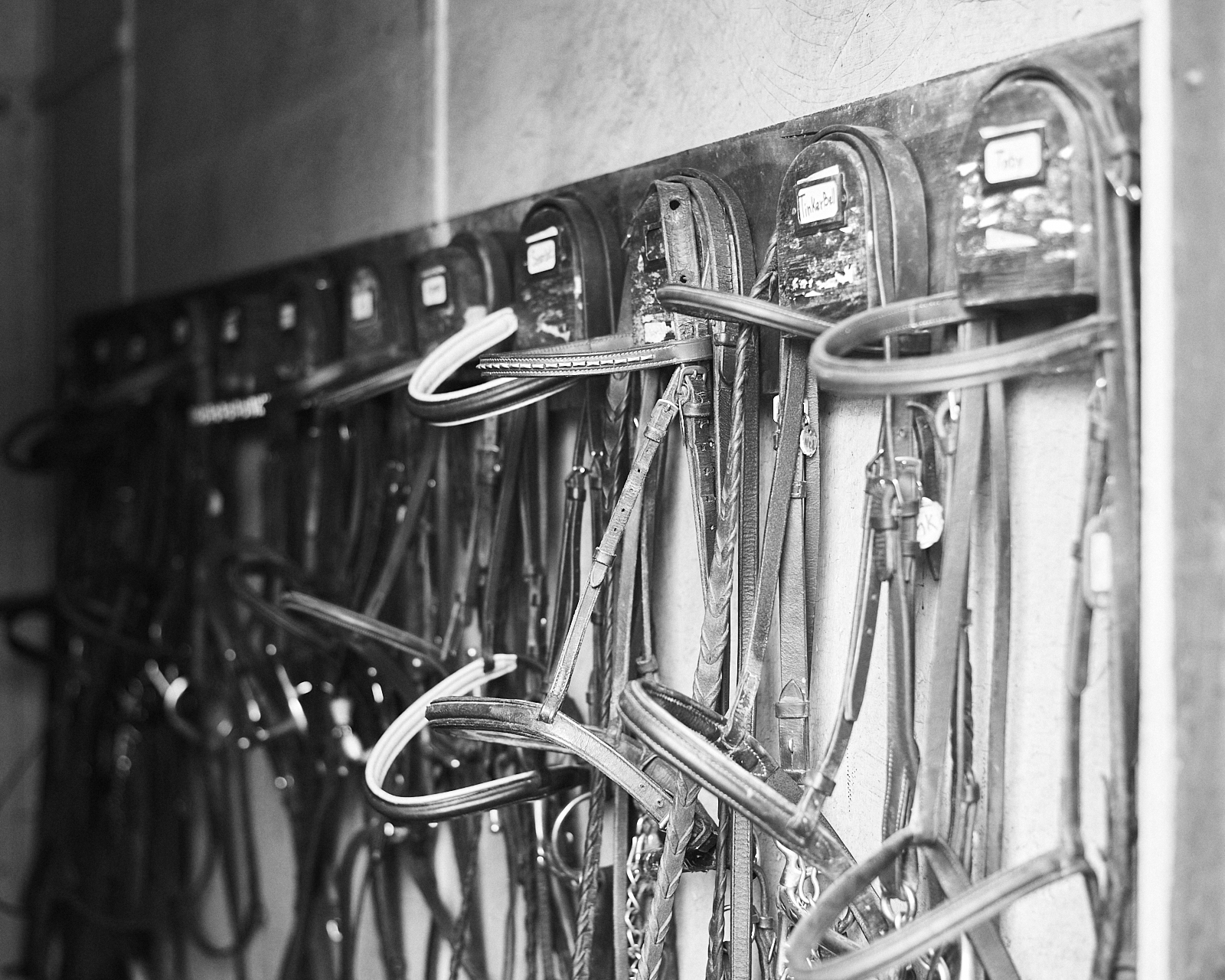
Tack hanging on the wall in the tack room, from the final version of “Ashford Farm in Photographs, 2021-2022.” 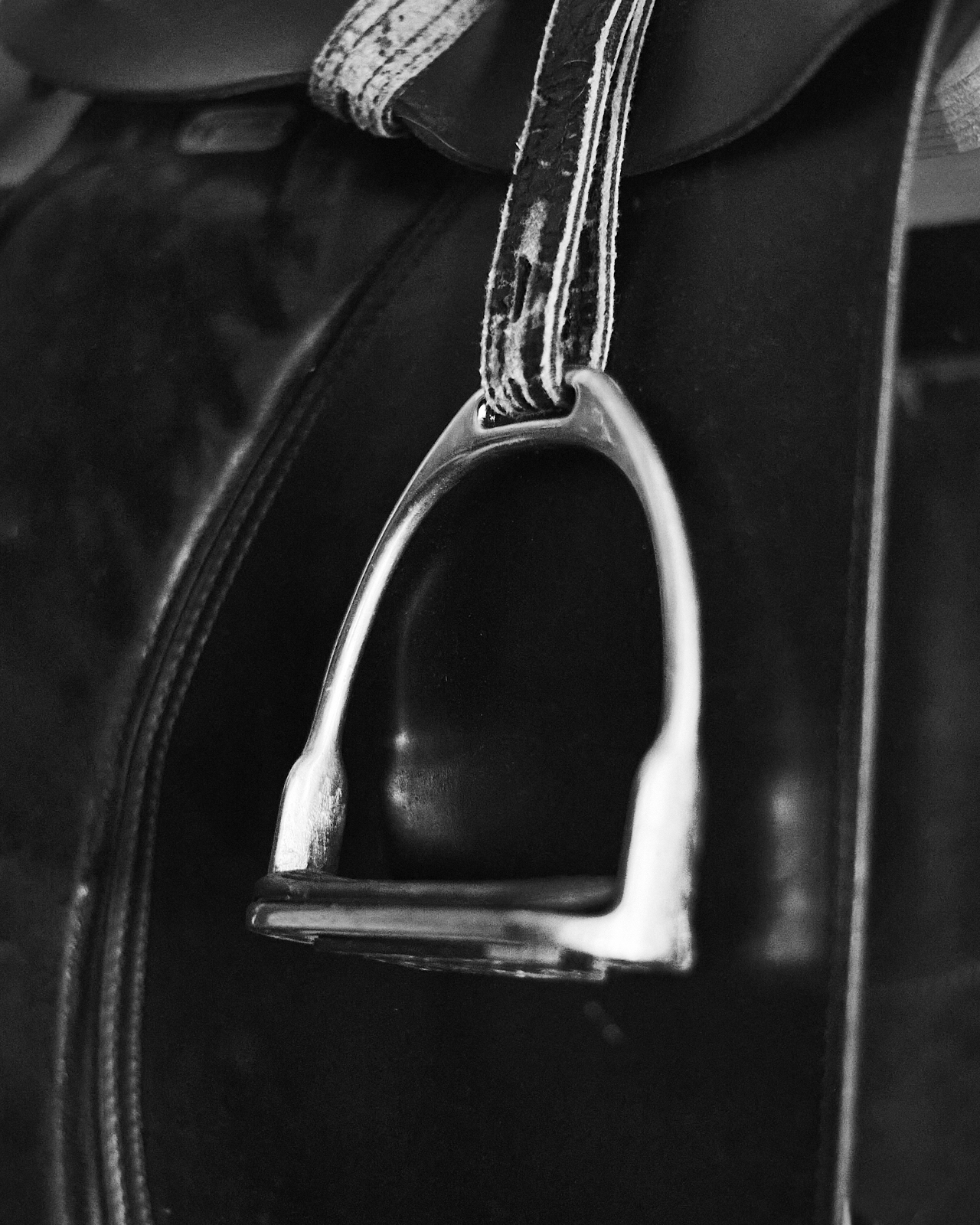
A stirrup, from the final version of “Ashford Farm in Photographs, 2021-2022.” In the end, I made three copies of this book, one for me, one for a friend, and one for the people who own Ashford Farm and let me loiter and take pictures. These episodic projects exist somewhere between creativity and art. I am happy to have made this book and need not share it with anybody, hence creativity. But it does something more when I share it with an audience that might be interested, hence art.
I might make another copy or two. I might not. If you want one, let me know. Maybe we can work something out.
-
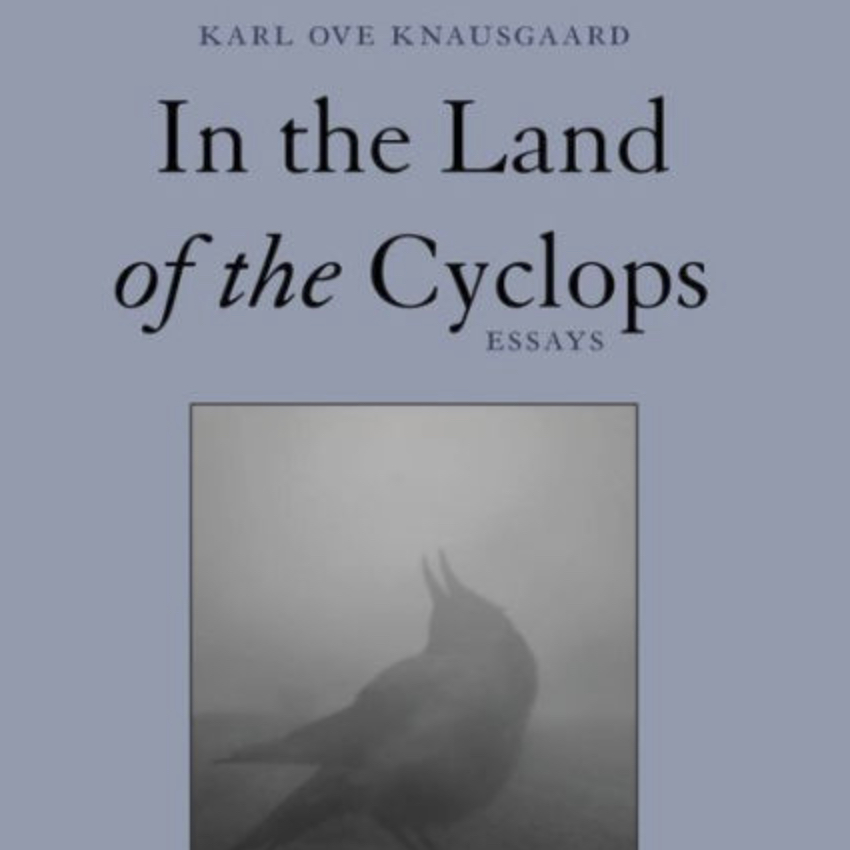
Protestantism and Art
Whenever I see a new picture I immediately seem to like and find aesthetically pleasing, I am suspicious. This cannot possibly be good, I think to myself. This cannot possibly be art. It feels like the spontaneous pleasure, the immediate sense of aesthetic satisfaction I derive in such instances is too easy and too shallow to be called a true artistic experience. …
Karl Ove Knausgård, “Inexhaustible Precision,” 40–41.
This take on art is clearly Protestant, since a genuinely Protestant person such as myself, for whom Protestantism is part of the marrow, can appreciate only what has come of hard work, only this has value, and holds nothing but disdain for what is given or easily taken, which is associated with sloth, idleness, indolence.
